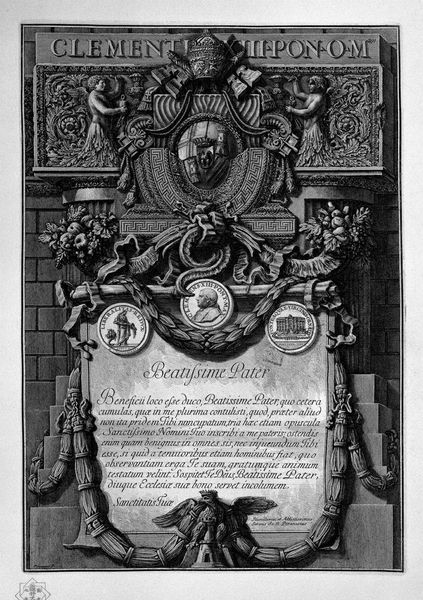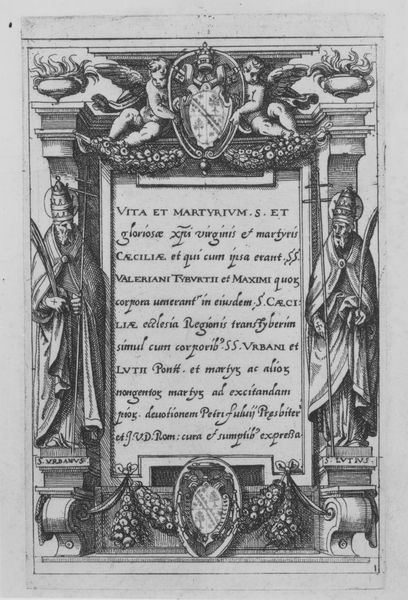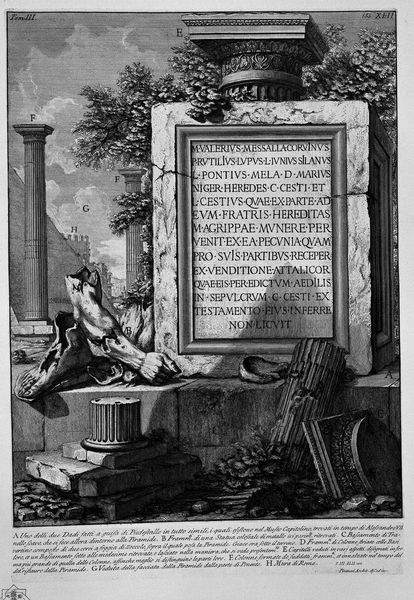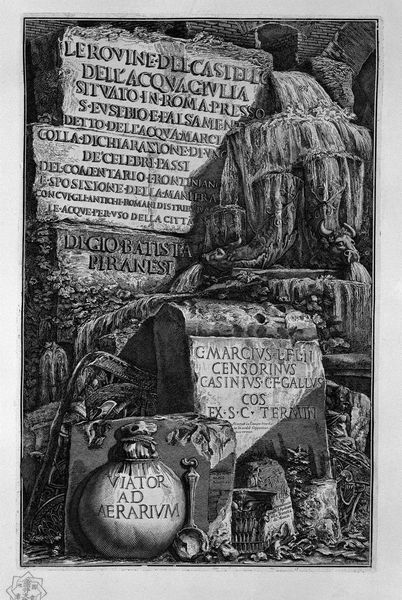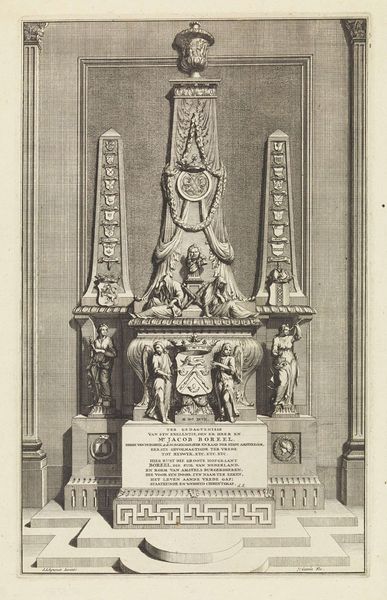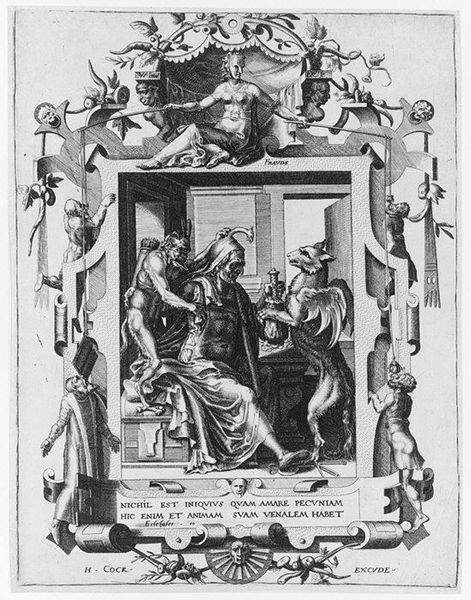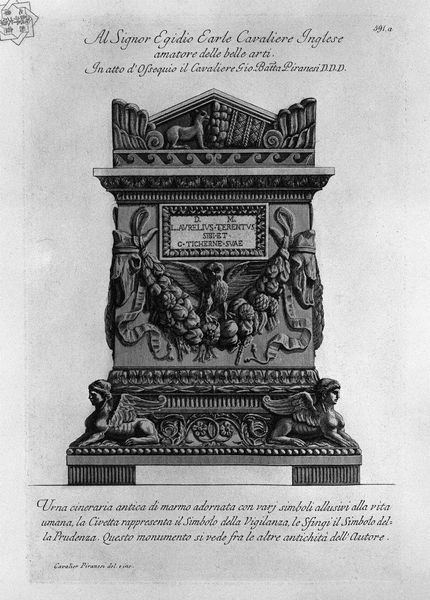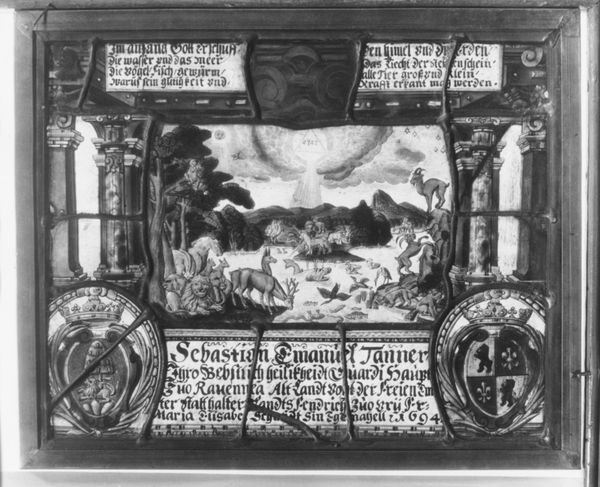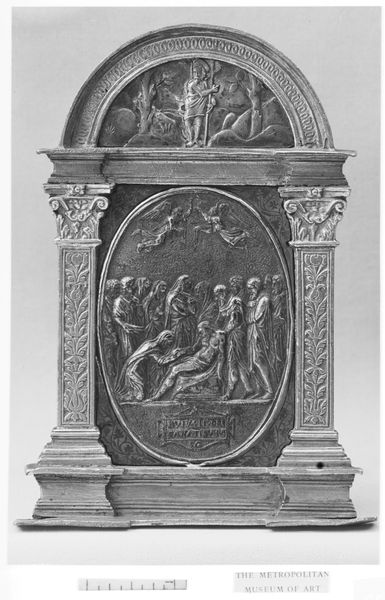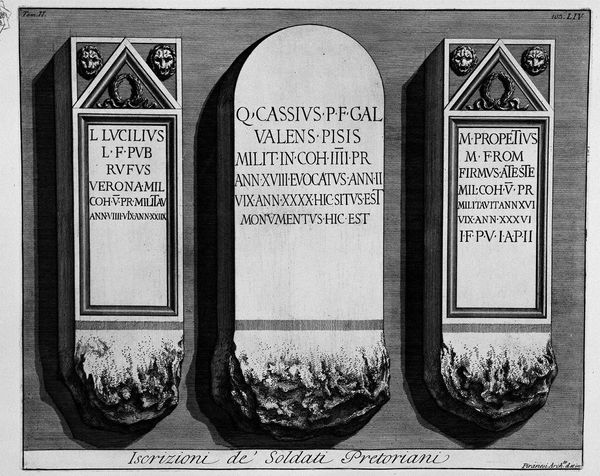
drawing, print, engraving
#
drawing
#
neoclacissism
# print
#
figuration
#
text
#
romanesque
#
geometric
#
ancient-mediterranean
#
history-painting
#
engraving
Copyright: Public domain
This print of Roman antiquities was made by Giovanni Battista Piranesi in 18th century Italy. The image encapsulates the 18th-century obsession with classical antiquity, using the visual language of the past to assert cultural authority in the present. Piranesi presents a tableau vivant of Roman emperors and Latin inscriptions. This wasn't just about aesthetic appreciation; it was about bolstering the prestige of Rome and, by extension, the Catholic Church, which was a major patron of the arts and archaeological endeavors. Note the inscription dedicated to Pope Clement XIII, highlighting the close relationship between artistic production and religious power. Piranesi's work invites us to consider the social conditions that shape our understanding of the past. Historical societies, archaeological reports, and institutional archives offer multiple ways of interpreting this print and its role in shaping cultural identity. By engaging with these resources, we recognize that art is not just a product of individual genius but is deeply embedded in social and institutional contexts.
Comments
No comments
Be the first to comment and join the conversation on the ultimate creative platform.
